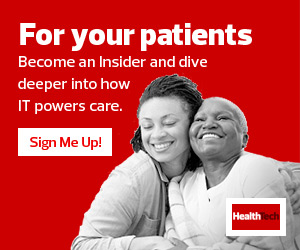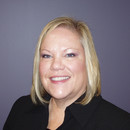Healthcare systems like Saint Luke’s are increasingly turning to virtual nursing to address the shortage. Virtual nurses work in remote centers with videoconferencing technology to observe and answer questions from patients, speak with family members and ease the burden on bedside nurses by performing tasks that don’t require physical proximity, such as conducting admissions interviews and providing discharge instructions.
“What better way to retain those experienced nurses who might be thinking of retiring or leaving the field early?” Ball says. “It’s a great way to allow them to continue their careers and for us to have access to all of their wonderful knowledge.”
There has been a 34 percent increase in the number of virtual nursing programs around the U.S. in the past year, says Laura DiDio, principal at research and consulting firm ITIC. The growth was spurred by the pandemic, “but it shows no signs of slowing down,” she adds.
Virtual nurses support bedside nurses in healthcare facilities, but they can also see patients at home using remote monitoring tools to collect clinical data, DiDio says. During the pandemic, virtual nurses used high-definition cameras and tablets to connect patients in isolation with their loved ones. Digital hospice and palliative care visits became commonplace.
“You will always have hands-on bedside care. That’s not going away,” Ball says. “But we must expand the types of caregivers that we have. I think virtual nursing is the wave of the future.”
The Technology Behind Virtual Nursing
Virtual nurses typically operate in remote centers manned with fully loaded workstations. At Saint Luke’s, each workstation uses a mix of multiple monitors, including HP monitors, the Epic Monitor dashboard feature and the Teladoc virtual healthcare platform, which includes a microphone, camera and videoconferencing software. Saint Luke’s also uses LogMeIn (now called GoTo) for remote desktop access so that virtual nurses can document as second nurse.
All the technologies used by Saint Luke’s virtual nurses were in use before the program launched. Even the workstations’ 5-foot adjustable desks were repurposed from an older project, Ball says. “We have been really lucky because we didn’t have to start from scratch with new technology,” she adds.
At Atrium Health in North Carolina, patient rooms use one of two setups to enable observation for its virtual nursing program to support newer nurses. New facilities are designed with audio and video capabilities, so the push of a button calls the virtual nurse, who appears on screen. Older facilities use wheeled poles with mounted cameras, speakers, microphones and monitors. Atrium Health uses the Caregility telehealth platform, Cerner cameras and software, and Microsoft Teams.












